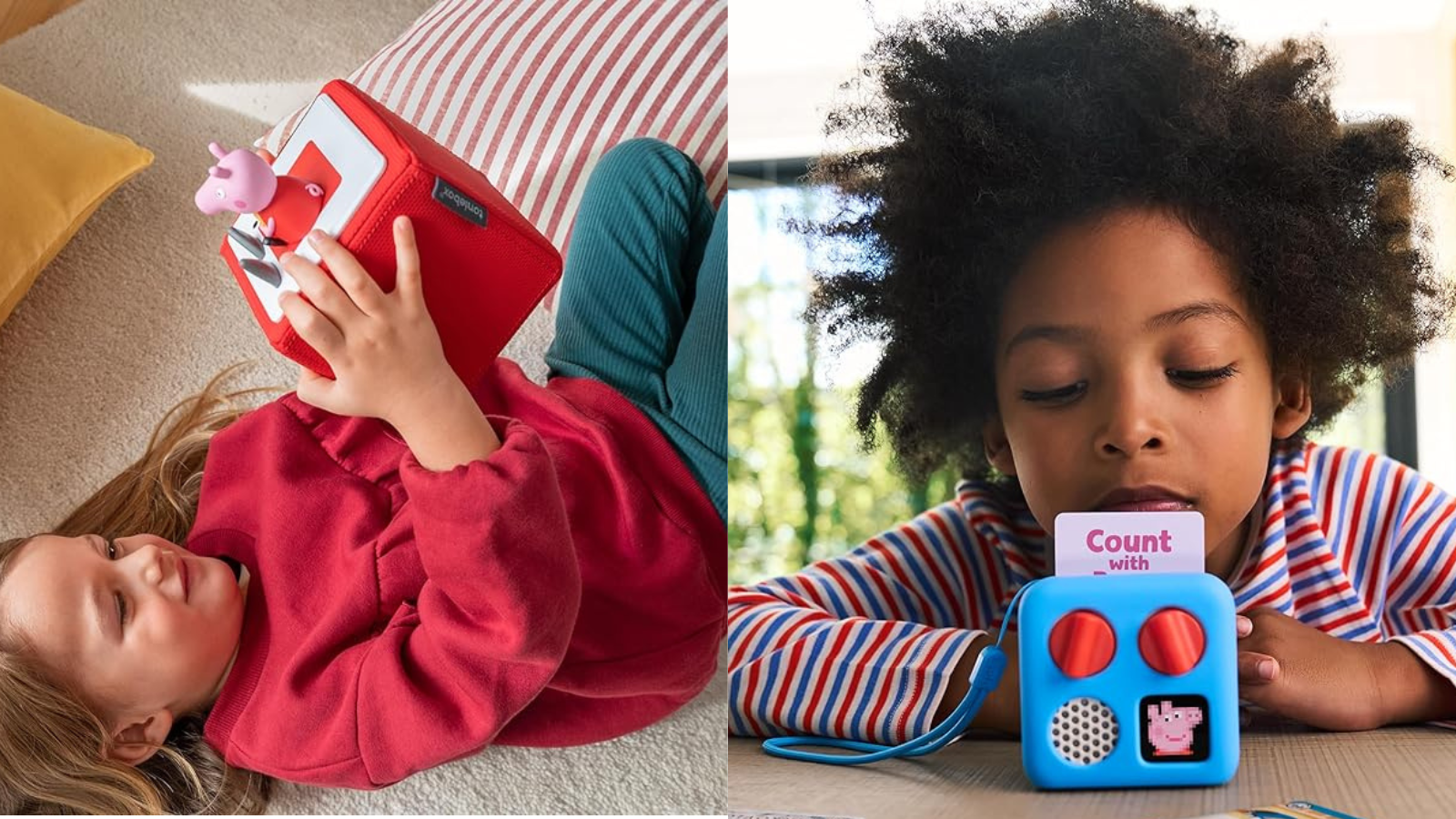For parents looking to encourage screen-free storytelling and audio engagement, both the Toniebox and Yoto offer creative and interactive solutions. Here’s how they compare:
Toniebox vs Yoto Player Cost
Both the Toniebox and the Yoto Player offer subscription services, though they are optional.
- Toniebox: There isn’t a monthly subscription fee tied directly to the Toniebox, but you need to purchase individual Tonies (figurines) for new stories and content.
- Yoto Player: Yoto offers a subscription service called Yoto Club for around £9.99/month. This subscription provides monthly audio content, including exclusive story cards, along with access to free daily radio shows and podcasts.
What Reddit Says: Toniebox vs Yoto
Toniebox overview
Designed for younger children, the Toniebox is a soft, durable cube that plays audio when paired with collectible figurines called “Tonies.” Children can tap a Tonie onto the box to hear stories, music, or even educational content. Its tactile design, simple controls, and pre-recorded content make it perfect for toddlers and preschoolers. It’s safe and intuitive, with a focus on imaginative play. The Toniebox doesn’t require Wi-Fi once the content is downloaded.
Pros:
- Simple, toddler-friendly design.
- Figurines add a tactile, fun element.
- No Wi-Fi required after setup.
Cons:
- Limited to the Tonies you purchase.
- More suitable for younger children (ages 3-7).
Yoto Player overview
The Yoto Player, aimed at slightly older kids (ages 5+), offers more flexibility with audio content. Using physical “cards” to load stories, podcasts, or music, it can connect to Wi-Fi to stream new content and even has a built-in radio and clock. Kids can explore a broader range of material, including free podcasts and radio shows, or load their own content. The Yoto also has parental controls, which offer more oversight.
Pros:
- Broader content options with audio cards and streaming.
- Customizable, including personal audio uploads.
- Parental controls and free daily content.
Cons:
- More complex and requires Wi-Fi for most features.
- Best suited for older children.
Final Verdict
The Toniebox shines for younger children, offering a fun, safe, and tactile experience, while the Yoto Player is a great choice for older kids ready for a wider range of content and more independence. Depending on your child’s age and how much control you want over content, either can be a great tool for audio-based learning and entertainment!

